January 2025
The global manufacturing automation market size accounted for USD 13.53 billion in 2024, grew to USD 14.85 billion in 2025 and is expected to be worth around USD 34.28 billion by 2034, registering a CAGR of solid 9.74% between 2024 and 2034. The Europe manufacturing automation market size is evaluated at USD 4.74 billion in 2024 and is expected to grow at a CAGR of 9.87% during the forecast year.
The global manufacturing automation market size is calculated at USD 13.53 billion in 2024 and is predicted to surpass around USD 34.28 billion by 2034, expanding at a CAGR of 9.74% from 2024 to 2034. The demand for manufacturing automation is rising due to rising labor shortages. This is driving the adoption of technological advancements which help the companies to manage their workflow.
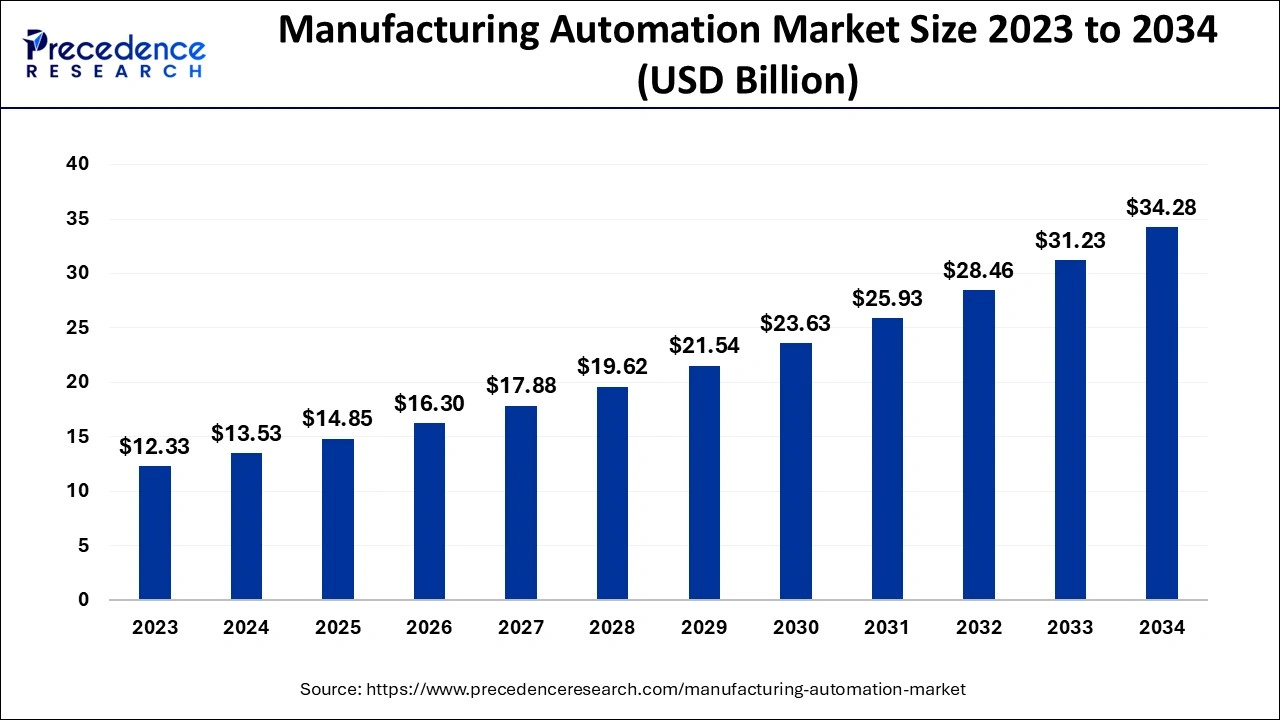
The Europe manufacturing automation market size is evaluated at USD 4.74 billion in 2024 and is projected to reach around USD 12.17 billion by 2034, growing at a CAGR of 9.87% from 2024 to 2034.
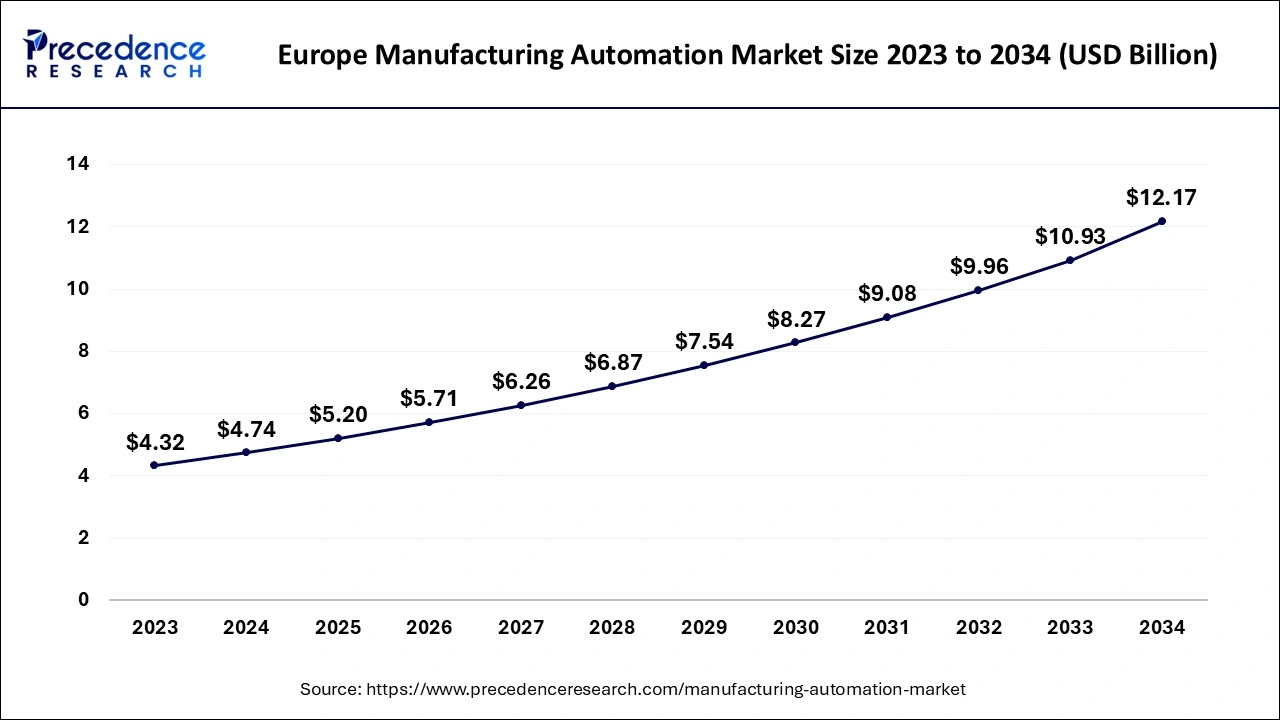
Europe dominated the manufacturing automation market in 2023. The dominance of the region is attributed to the well-established manufacturing companies that are adopting automation in their manufacturing processes. This has raised the quality standards in the region, which leads to more investments in robotics and other systems that enhance the whole manufacturing process. Additionally, the European governments' rising focus on adopting sustainable production is expected to generate more business opportunities.
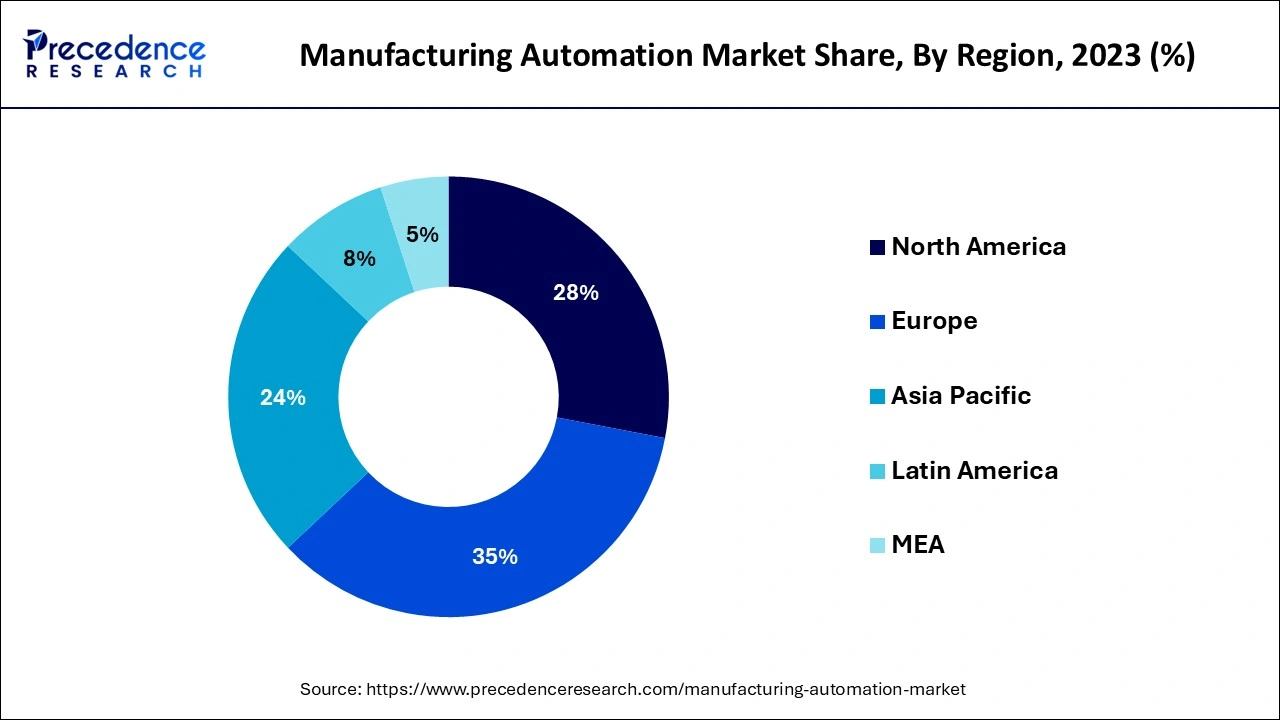
North America is anticipated to grow at the fastest CAGR in the market during the forecast period of 2024 to 2034. The growth of the region is attributed to the rising focus on the adoption of smart technologies in the region that helps towards the growth of the manufacturing automation market. The rising labor costs in the region are also one of the major reasons due to the rapid adoption of these solutions by the companies which might help them in generating more revenue share.
Manufacturing automation refers to the use of technology to perform manufacturing tasks by minimizing human intervention and without compromising the productivity of the process. The manufacturing automation market is witnessing significant demand due to its exceptional work efficiency, which helps perform complex tasks with precision. It mostly uses machinery, robotics, and other computer-based systems to perform the tasks. Technological advancements are leading to magnificent inventions.
How is AI Revolutionizing the Manufacturing Automation Market?
The rise in technologies like artificial intelligence (AI) and machine learning (ML) are playing a transformative role in the growth of this market. AI algorithms play a crucial role in analyzing huge datasets that enhance production efficiency by adjusting multiple helpful parameters. The manufacturing automation market is gaining significant popularity due to the advancements in robotics that are specially designed to work alongside humans.
AI's data-analyzing capabilities also play a vital role in predicting data from sensors and machine logs to ensure equipment maintenance before any severe damage. Many companies across various industries are adopting these technologies that might help them manage product quality with the help of AI-based vision systems and sensors that can detect defective and damaged products.
| Report Coverage | Details |
| Market Size by 2034 | USD 34.28 Billion |
| Market Size in 2024 | USD 13.53 Billion |
| Market Size in 2025 | USD 14.85 Billion |
| Market Growth Rate from 2024 to 2034 | CAGR of 9.74% |
| Largest Market | Europe |
| Base Year | 2023 |
| Forecast Period | 2024 to 2034 |
| Segments Covered | Component, Technology, Deployment, Industry Vertical, Solution, Enterprise Size, Application, End-Use, and Regions |
| Regions Covered | North America, Europe, Asia-Pacific, Latin America and Middle East, & Africa |
Rising manufacturing standards
Rapid urbanization is one of the major factors that has increased the demand for higher-quality products across various industries. The manufacturing automation market is witnessing significant demand due to the rising demand for product quality and consistency across various industries like electronics, healthcare, and automotive. Rising market competitiveness plays a vital role in enhancing the quality of products, which can help increase customer satisfaction. Governments are imposing regulations that focus on maintaining rules that enhance product quality. Additionally, the rising focus on employee safety is playing a transformative role in adopting automation technologies in the manufacturing industry.
Integration of 5G and advanced connectivity
The rapid technological advancements in internet connectivity are crucial factors that ensure the smooth running of automation. Many companies that use real-time data in their manufacturing processes are dependent on advanced internet connectivity. The manufacturing automation market is witnessing significant popularity due to the rise of advanced internet connectivity that is helping companies manage their workflow efficiently. Additionally, the 5G enables the robots to operate various machinery in real-time, which can perform multiple tasks, such as material inspection.
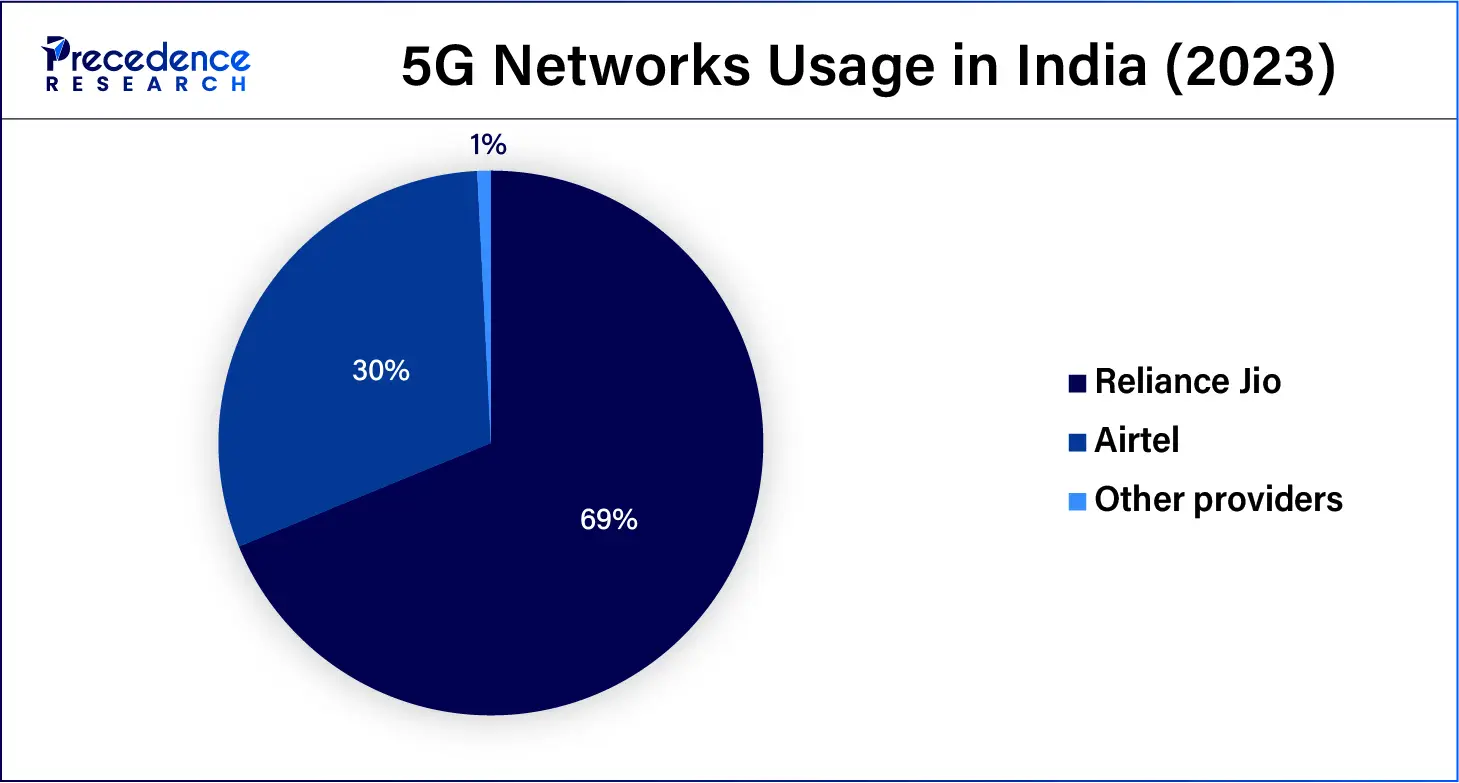
Higher implementation costs
The automation systems often require advanced technologies, infrastructure and other software which can be unaffordable for low-income companies. The manufacturing automation market has managed to grow in well-developed areas but its growth can be affected in the developing regions lacking technologies. Additionally, the rising market competition is demanding advanced technologies that could match the market standards.
Rising labor costs
The rising cost of living and inflation is one of the major factors that drive labor costs. The manufacturing automation market stands as a potential alternative to labor shortages, which can eliminate the requirement for physical needs. Adoption of these technologies may require higher investments, but it is expected to provide ROI in some years by also boosting work productivity. Many companies are adopting these automation systems to help them maximize their profits and reduce operational costs.
Expansion of automation as a service
The emergence of automation as a service (AaaS) is one of the crucial factors leading towards adopting these systems. The rising need across various industries is providing several business opportunities in the manufacturing automation market. Companies are adopting subscription-based models which are usually preferred by small-scale businesses. This helps the companies in managing their expenditure by reducing the human labor requirement. Additionally, these technologies are gaining popularity in multiple industries due to their capability to perform complex tasks.
The hardware segment marked its dominance over the global market in 2023. Hardware in the manufacturing industry refers to the sensors, robots, and controllers that are used for automation. The dominance of the segment is attributed to the rising need for automation in multiple applications to match quality standards. The manufacturing automation market is witnessing significant investments to expand the use of this equipment, which can be useful in performing manufacturing tasks. The rising focus on technological advancements is one of the major factors that is expected to bring more opportunities in the upcoming years.
The services segment is expected to register the fastest growth in the market during the forecast period of 2024 to 2034. These services include support and consultation as an automation service. The rising adoption of technologies like AI is leading to the adoption of these services that help in gaining more precise outcomes. The rising shift towards digitalization is leading to the growth of the manufacturing automation market as it helps in enhancing the operational efficiency of these services.
The PLC segment registered the largest share of the market in 2023. PLC refers to programmable logic controllers that are specially designed to control the machinery and equipment. The dominance of the segment is attributed to the widespread use of manufacturing automation solutions across various industries. The manufacturing automation market has been efficiently growing due to the dominance of PLC over the past decades. Companies are adopting this technology as it can perform in harsh environments. Technological advancements are focusing on simplifying the use of these controllers, which is anticipated to bring more business opportunities in the upcoming years.
The robotics segment is anticipated to grow at the fastest CAGR in the market during the forecast period of 2024 to 2034. The growth of the segment is attributed to the increasing adoption of industrial robots, which help in reducing the need for human intervention. This helps in maintaining the safety measures, which can further gain more acceptance through multiple companies. Additionally, the manufacturing automation market is expected to gain more importance due to the rising labor shortage. Adopting these systems is expected to help companies grow their operational efficiency in the upcoming years.
The on-premise segment held the highest share of the market in 2023. The dominance of the segment is attributed to the widespread use of these technologies in the servers, which ensures the security and control of the systems. The manufacturing automation market is gaining popularity due to the well-established user base of these systems, which is leading toward more technological advancements that can help them gain more value. Rising collaborations and partnerships are gaining more investments from the companies that help maintain market dominance.
The cloud-based segment is anticipated to grow at the fastest CAGR in the market from 2024 to 2034. The growth of the segment is attributed to the rising use of these solutions by the companies due to their scalability, which allows its use for any tasks. The manufacturing automation market is gaining massive popularity due to the rising adoption of cloud-based services by small-sized businesses without the need for any physical infrastructure.
The automotive segment stood the dominant in the global market in 2023. The dominance of the segment is attributed to the widespread manufacturing of vehicles like cars, trucks, and other transportation, which are highly dependent on automation systems. The manufacturing automation segment is growing efficiently due to the rising need for robotics in the automotive segment, where they perform various complex tasks that can eliminate the need for human intervention. This further helps the company grow efficiently as it also saves operational costs.
The healthcare segment is anticipated to grow at the fastest CAGR in the market during the forecast period of 2024 to 2034. The growth of the segment is attributed to the rising demand for medical devices, which is also benefiting the manufacturing automation market. The rising prevalence of diseases is also one of the major contributors that lead to market growth.
The control systems segment held the highest share of the market in 2023. These systems monitor and manage the machinery and manufacturing processes. The manufacturing automation market is witnessing significant growth due to the significance of these systems, which offer reliable services during the manufacturing process. These systems have been widely used over the past decades, which makes them dominant.
The robotics and autonomous segment is anticipated to register the fastest growth during the forecast period of 2024 to 2034. The growth of the manufacturing automation market is derived from the shortage of skilled laborers, which gives an upper hand to robotics. Many companies are adopting these solutions to help them perform various tasks without human intervention.
Large enterprises benefit from economies of scale. With extensive manufacturing operations, they can justify the implementation of automation systems that can reduce labor costs, increase productivity, and improve precision across vast production networks. Larger production volumes help spread the cost of automation technology over more units, making it more cost-effective for large companies compared to small and medium-sized enterprises (SMEs).
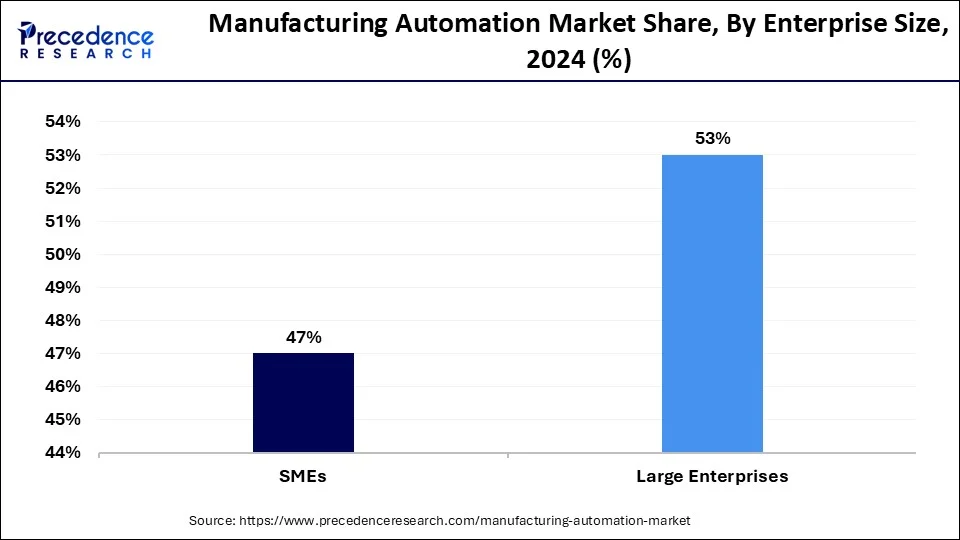
Large enterprises often have complex global supply chains that require robust automation to ensure efficiency, consistency, and real-time coordination across multiple regions and facilities. Manufacturing automation solutions enable better tracking of inventory, predictive maintenance, and seamless integration with global logistics systems, making them crucial for large companies managing widespread operations.
The assembly line segment led the global market in 2023. Assembly in the manufacturing process refers to fitting and joining the components that create the final product. The manufacturing automation market is witnessing significant growth due to its rising need in automotive manufacturing. Many companies are adopting the use of robotics, which leads to enhanced results in assembly applications. Automation becomes a crucial factor as it plays a vital role in detecting the quality of the final product. Many companies are adopting these applications, which are helping them to generate more revenue in less time.
The material handling segment is expected to grow at the fastest rate in the market during the forecast period of 2024 to 2034. The process involves storing, protecting and moving the materials throughout the manufacturing process. The manufacturing automation market is witnessing significant demand due to the rising demand in e-commerce where companies require automated material handling.
The discrete manufacturing segment was dominant as it registered the highest revenue share in 2023. The segment involves the production of distinct items like cars and electronics which are produced on a large scale. The manufacturing automation market is gaining significant popularity as it requires high precision in assembling, controlling and inspecting essential components in these applications. The rising adoption of robotics is anticipated to bring more opportunities can perform complex tasks repeatedly.
The process manufacturing segment led the global market in 2023. The segment refers to the production of goods continuously by using chemical and biological transformations. The manufacturing market is growing significantly due to the rising user base in the food and beverage industry where they are produced in bulk quantities.
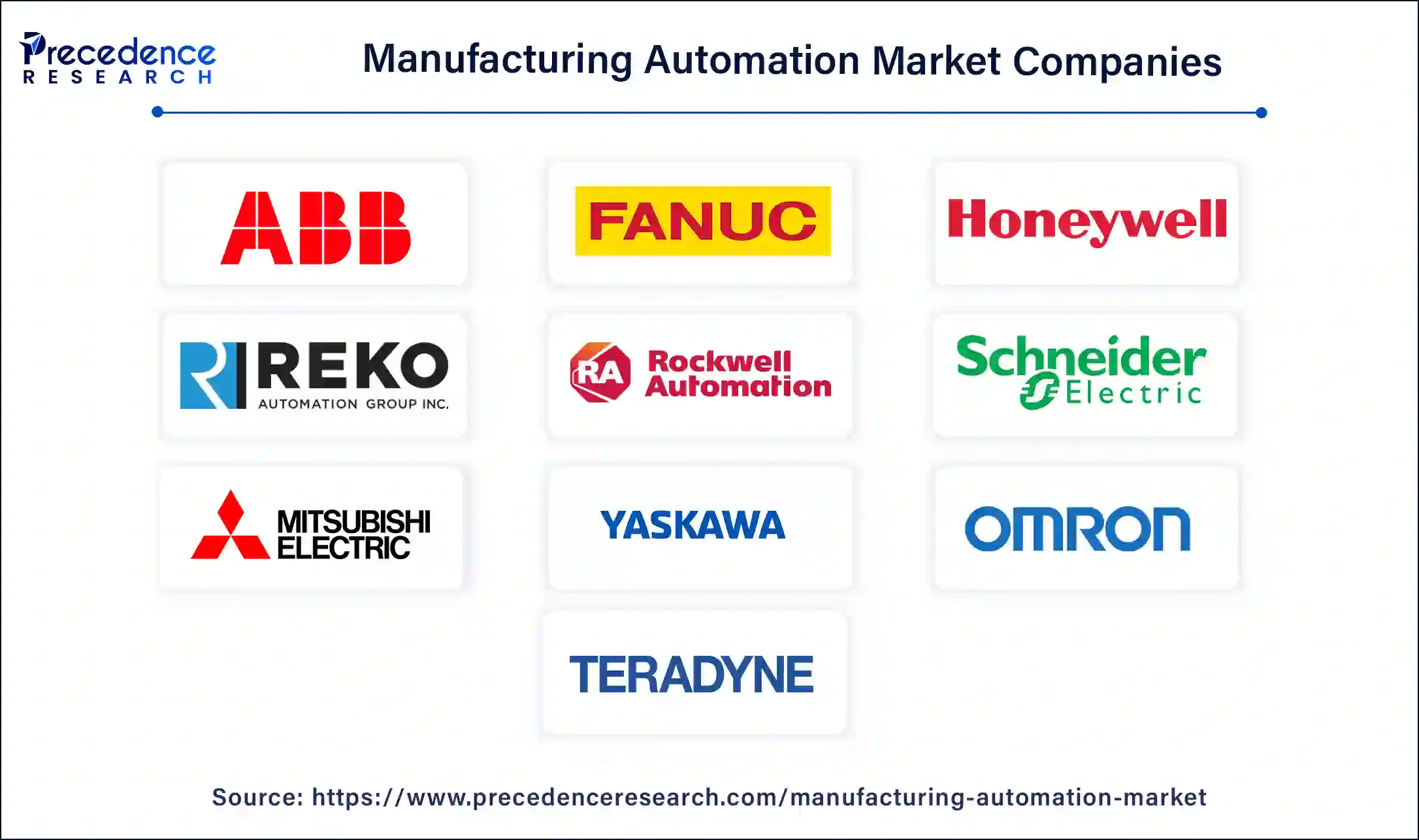
By Component
By Technology
By Deployment
By Industry Vertical
By Solution
By Enterprise Size
By Application
By End-Use
By Geography
For inquiries regarding discounts, bulk purchases, or customization requests, please contact us at sales@precedenceresearch.com
No cookie-cutter, only authentic analysis – take the 1st step to become a Precedence Research client
January 2025
January 2025
August 2024
November 2024